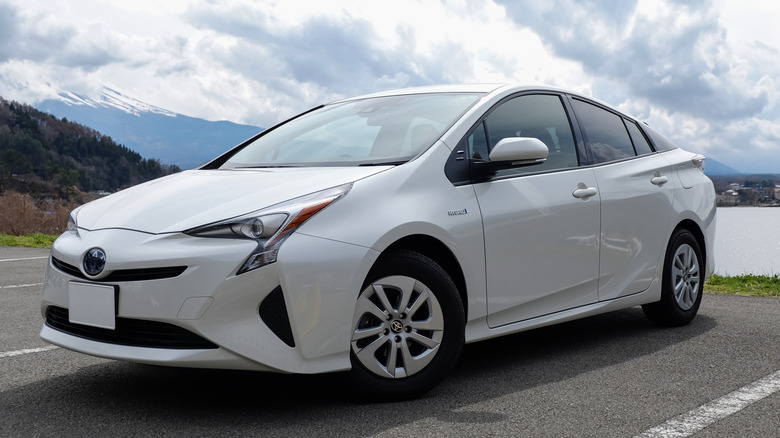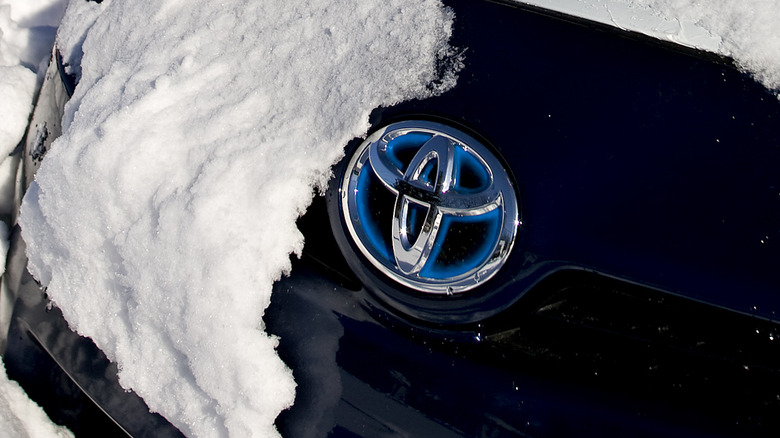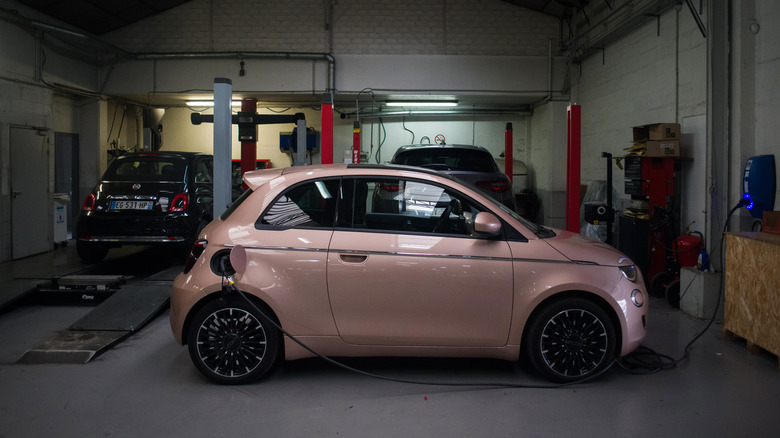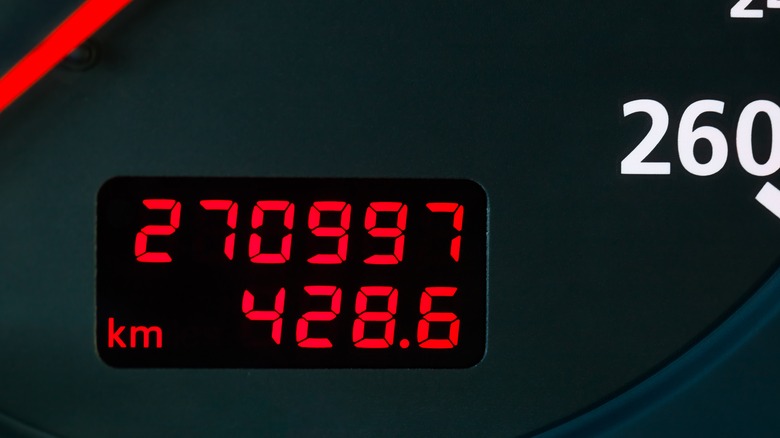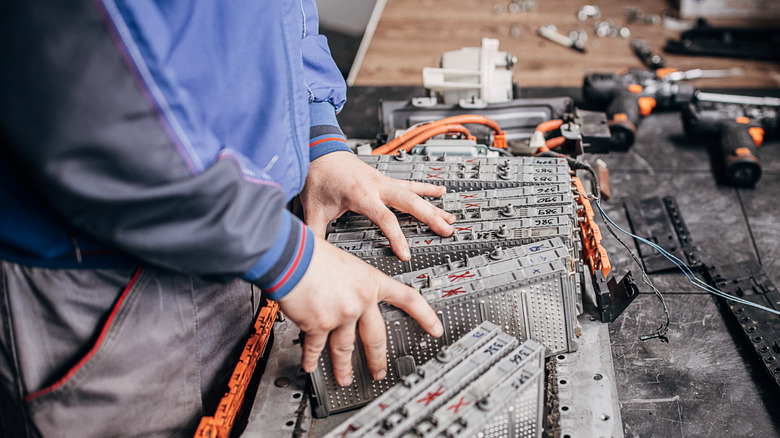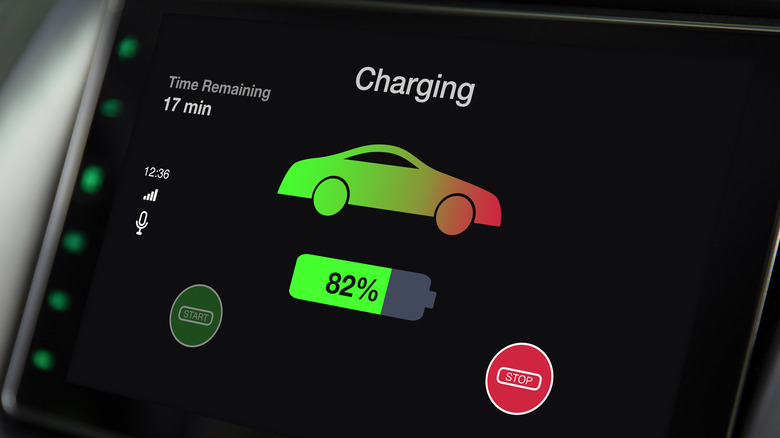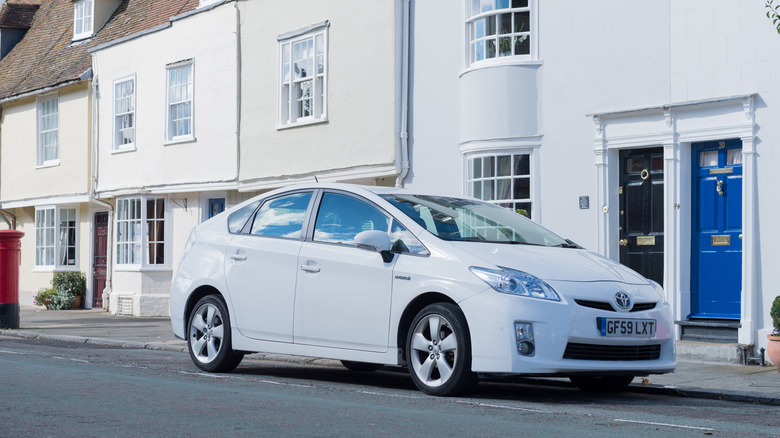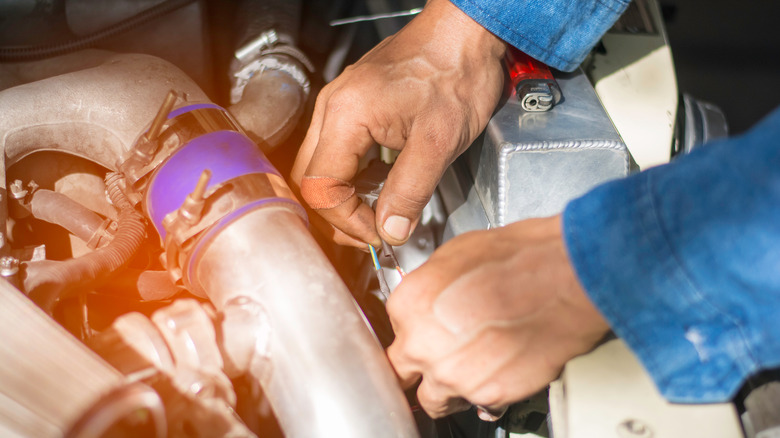7 Essential Tips For Maintaining Your Hybrid Car's Battery Health
One of the major concerns around hybrid ownership centers on the thing that sets it apart from a regular, gas-only powered car: its battery. A car battery can provide extra range, increased power, more torque, and better fuel efficiency. However, hybrid batteries will also degrade and fail over time, and replacing it may be extremely costly. Many manufacturers back their batteries with generous warranty, which can alleviate some of the risks. Some of those warranties are pretty generous, with industry leader Toyota offering up to 15 years should you choose to have your regular services performed at one of its dealerships. With that being said, warranties have their limits, and if you break one of the rules in the fine print then you could be on the hook for a large repair bill.
When we say hybrid battery, we, of course, mean the large battery that powers the vehicle's motor, not the lead-acid battery that powers the starter, radio, and other small items. There are two types of batteries currently used in hybrids — nickel metal hydride (NiMH) and lithium-ion (Li-ion) batteries. There are some differences in cost, efficiency, and environmental sustainability between the two battery types, but the care instructions are essentially the same. If you're familiar with modern batteries in general, like the ones in a cellphone, there's also a lot of crossover. The battery in a hybrid is essentially a larger version, and many of the things that will damage your cellphone battery will also harm the one in your car.
Here are eight ways you can ensure your battery lasts as long as it's supposed to.
Avoid extreme temperatures
Extreme temperatures are a surefire way to damage a battery. This includes the cell in your phone, watch, or car. While some protective measures are in place to help keep a hybrid battery in the correct temperature range, things can still get too hot or too cold for it. This problem is worse in certain states where the mercury gets particularly high or low, so if you're in Arizona or Alaska, a climate-controlled garage is a necessity. However, thanks to climate change and other variables, there's a chance of extreme weather conditions in many other places too.
While some vehicles have protective functions, extremely high or low temperatures can severely damage a battery. At the very least, operating outside the optimal temperature range of 15 – 35°C (59 Fahrenheit to 95 Fahrenheit) will make a battery operate far less efficiently. This is because the battery utilizes a chemical process that slows down outside of its ideal temperature window. Many batteries have some kind of countermeasures like fans to keep them cool or heating systems to keep them from freezing, but these systems will use some of the battery's charge and can only help so much. The battery will also produce some heat while working, so if it's a particularly hot day the vehicle may be fine sat in a garage but could push itself into the danger zone when used.
Don't store your vehicle for too long
Even if a vehicle is your daily driver, there are periods when it may not see much use. In extreme cases such as the 2020 pandemic, many people went weeks without leaving the house. There are also things like extended business trips, long vacations, and holiday periods that could see you going a few weeks without doing a lot of driving. Few cars respond well to being mothballed for extended periods, and you should run many of them at least once every couple of weeks to keep the engine lubricated at the very least. However, keeping a hybrid in storage can lead to further problems.
The charge in a hybrid's battery will gradually decrease. Along with natural loss of power, it is sometimes powering a few things even when your vehicle is switched off. This can lead to the battery being completely drained over time. To avoid completely draining, and subsequently damaging, the battery, you should run your hybrid for 20 to 30 minutes every two weeks at a minimum. Taking it out for a spin is the best option, but many vehicles will add some juice to their batteries while idling. Plugin hybrids, as the name suggests, can simply be plugged in to top their power up.
Consult the owner's manual or a dealership to find out what your battery's exact parameters are, and how best to maintain it if your vehicle has to be stored.
Limit its use
Like many other parts, a good way to reduce wear on a battery is to use it less often. However, unlike suspension components, many hybrid vehicles can give their batteries a break from time to time. There's a fair chance you have the option of driving with the engine alone, and not having the vehicle's battery contribute to its powertrain. This option is usually accessible with certain drive modes, or through your vehicle's options menu. While the vehicle's battery contribution is essentially "free," there could be times when you want the engine alone to take on the burden of getting you from A to B.
Fuel has a shelf life, and you should burn through what's in your tank around once every six months at the very least. If you have fuel that's about to go off, then relying on the ICE part of your vehicle can help you do that more quickly while giving your battery a break. Similarly, gas prices tend to fluctuate significantly over time. When gas is cheap, why not make the most of it and reduce the load your battery and electric motor take on?
This is all important because batteries are only rated for so many charge cycles. This is why you see a drop in their efficiency over time. After two or three years, your cellphone's battery can't hold the amount of charge it used to — and it's a similar story with your car. Your car goes through fewer charge cycles per year, so its battery lasts a lot longer, but the same principle applies.
Keep to a maintenance schedule
As with many other components, maintenance is key to a long and uneventful hybrid life. While it may not be obvious at first, the battery on a hybrid has to be maintained much like any other vehicle component. This includes some mechanical parts that should be inspected, cleaned, and in some cases replaced over time. One popular cooling method involves a specific fan that blows air over the battery itself. This fan needs to be inspected on occasion, and it also has an air filter that stops it from depositing dirt and debris on the battery itself. Like the other air filters on your vehicle, this has a limited lifespan and will become clogged over time. Switching it out isn't complicated, and should be done as part of a maintenance routine.
Regardless of the fan's condition, the battery should still be inspected for dirt and dust. A layer of filth on a component can trap heat, much like a coat will trap heat on a human. If there's dirt on the battery, you should clean it ASAP to prevent overheating, inefficiency, and damage. Electrical resistance can be a problem too. The points that connect the battery to a vehicle's powertrain can become corroded. In many cases, they can simply be cleaned, though if the corrosion is particularly bad they'll have to be replaced. However, getting to the points on the bus bars requires disassembling the battery, and some fairly nasty chemicals are required for the cleaning process.
It may be worth having the battery professionally serviced if you aren't comfortable taking the task on yourself.
Don't let it get too full, or too empty
As with many other batteries, charging the cells powering your hybrid to 100%, or letting them drain to nothing, is a bad idea. Storing near max capacity, or spending periods with no charge at all will drastically reduce the parts' lifespan. At high charge, lithium cells can grow tendrils called dendrites, which can cause shorts between various internal parts of the battery. Similarly, letting it go completely dead can result in a charge-limiting chemical process occurring within its cells. To put it in simple terms, a Li-Ion battery works by shifting lithium between a graphite and cobalt oxide layer inside the battery. At half charge, there's an equal amount of lithium on both sides. As a result, charging or draining to extremes can damage one of the sides as it becomes overstuffed with lithium.
Most modern batteries have some kind of overcharge protection, and are designed to shut off before going completely dead to prevent damage to their cells. However, you shouldn't over-rely on this. Batteries naturally lose charge over time, so while the juice box may not be depleted when it shuts down, it will be a short while after. As a result, you should do what you can to get some charge back into it ASAP. Overcharging protections are unlikely to fail, but the closer you are to a full charge the more chance you have of some dendrites cropping up inside your battery.
If you want your hybrid's battery to last as long as it possibly can, you'll ideally keep its charge somewhere between 20% and 80% at all times. Multiple shorter charging spells are also preferable to longer, battery-filling, charges.
Avoid too many short trips
Americans love their cars, and will often hop in a vehicle instead of simply walking down the street. This practice isn't great for an individual's overall health, and it could be harming the health of their hybrid too. While the occasional short trip in a hybrid vehicle is okay, using something like a Prius or Elantra Hybrid for regular one or two-mile jaunts is a bad idea.
A short trip will drain some degree of charge from the battery. There's even a chance that a hybrid owner might take that short trip on battery power alone. It's an option in some vehicles, and on its face means no fuel will be used. The trip is essentially "free." However, due to the short length of the trip, the vehicle won't have a chance to restore much, if any, charge to its battery. As a result, a hybrid being used for regular short trips could be perpetually operating on a low charge. In the short term, this will impact fuel economy as the vehicle relies on its combustion engine alone when no battery power is available.
In the long term, a battery with little or no charge will suffer permanent damage. While you don't need to worry about hopping in the hybrid for the occasional short jaunt, you should avoid making a habit of it if you want to maximize its battery's lifespan.
Test it regularly
Regular battery testing should be part of your hybrid's maintenance routine. If possible, you should have the battery checked over once or twice per year. Timing this with something like an oil change, or another regular service, will save you time and effort while also ensuring you don't miss a check. However, it is worth noting that not all garages will have the equipment and/or expertise necessary to test batteries — so this may only apply if you have services performed at a well-equipped garage or your local dealership.
Testing and checking the battery will do a few things. First, a mechanic will check for some of the issues we mentioned earlier including a clogged filter, a dirty battery, or corrosion on the contact points. The cells of the battery should also be tested, and any bad cells should be identified. Batteries are made up of multiple cells, and these don't fail all at once. If your battery has several bad cells, it can be "reconditioned." This essentially means it's cleaned up and bad cells are replaced, thus prolonging its life.
Replacing a few cells is often far cheaper than a complete battery swap, and it will extend the life of the remaining good cells. The more dead cells a battery has, the more work the remaining cells have to perform. As a result, the lifespan of the healthy cells will shorten as the number of cycles they're put through increases. Other issues that can shorten battery life could be detected and resolved during a checkup, which limits lasting damage to the battery.
